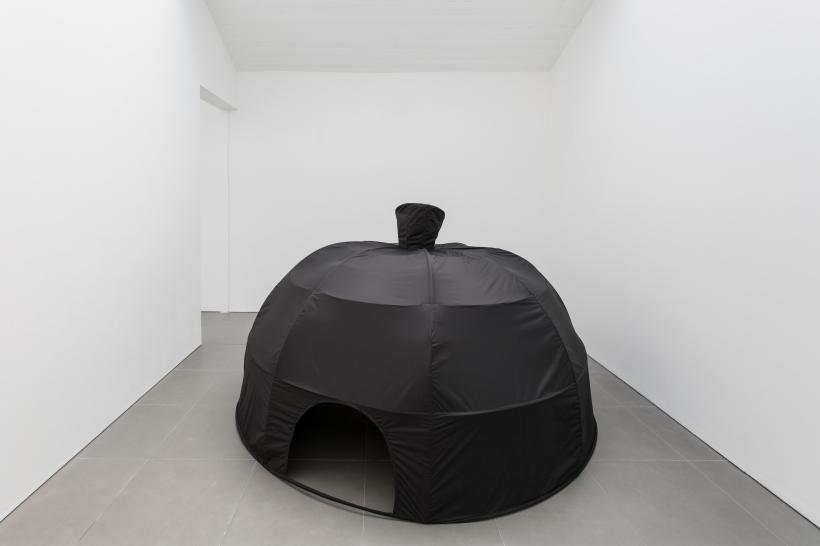The title of this exhibition refers to a dispute that arose between Samuel Beckett’s French and American publishers over the rights to ‘Eleutheria’, an as yet unpublished play. The author himself seemed ambivalent to its publication during his lifetime, declaring it “une pièce ratée” - a failed play.
It is fitting that the accompanying exhibition text for ‘A Failed Play’, written by Anna-Sophie Berger herself, opens with a story that leaves out the play entirely. The focus is on everything but - Beckett’s declaration of it as a failure, his begrudging agreement to translate it for publication in English, and the fight that ensued over copyright following his death. The distinct priorities informing the publishing houses’ claims are interesting; the Americans used their credo of “freedom of speech” to insist on the public’s right to access Beckett’s work, whilst the French fought to preserve the artistic intentions of the dead author. Amongst all this drama the play itself is, in true Beckett fashion, mute; acting merely as the site upon which all of this activity occurs.
Much like a Beckett stage, this exhibition space is stripped bare. Upon walking into the gallery I am met with: a poem on the wall; a cage-like structure made out of ladders; mounted photographs; a black tent in the shape of a squat pumpkin (which is apparently meant to hold the much more serious shape of a ballgown), and little else. Berger has stated that she thinks of her installations as sites of activity, like a stage upon which events play out, and it is clear she is attempting through the text to open up a discourse between Beckett’s work and her own. I find the idea of the text as a piece of stage direction for her assembled objects promising, however, it reads more like an English literature essay on the playwright than as something that has anything to do with what her own work is doing.
Berger clearly has a way with words. A mounted poem entitled ’What The Turtleneck Is To The Shirt’ (2019) is a smart narration of the relationship between clothes and body as they are slowly peeled away from each other. Unfortunately this astuteness falls apart when my attention moves to the objects presented here.
Unlike Beckett, none of these objects seem to carry any kind of symbolic charge or liveliness, either together or as grouped configurations. Beckett used nothingness as an active agent in his plays. It’s not so much that he simply removed the presence of objects but also sculpted the yawning space between them. His nothingness had a presence.
Walking through Berger’s installation I feel like I’m ticking off a laundry list of ingredients for an out-of-the-bag contemporary art show; a pile of ladders held together with zip ties - check; wall-mounted black-and-white photographs - check; an essay on existentialism - check. I can’t help but think the alternative translation of “une pièce ratée” - a failed room - would have been more appropriate.





_2,_2019,_anna-sophie_berger,_cell_project_space__large.jpg)


